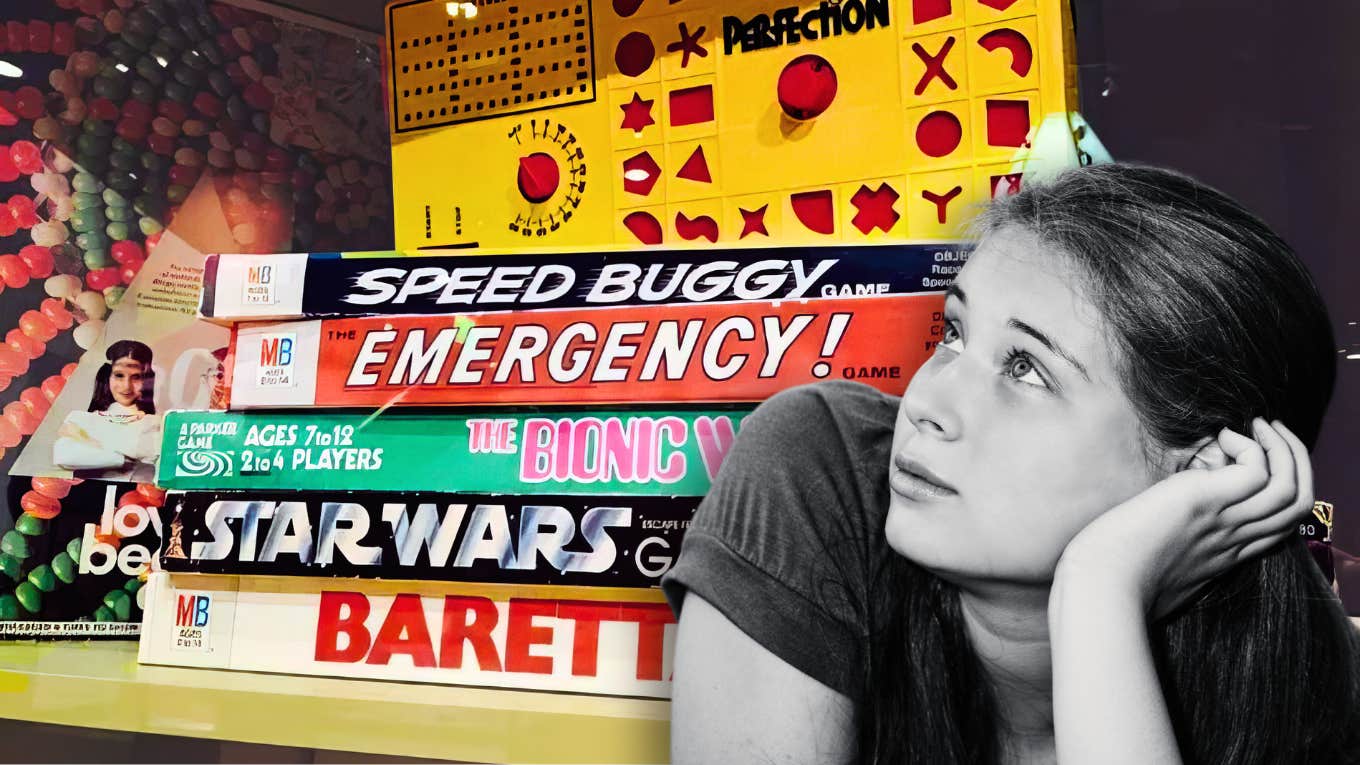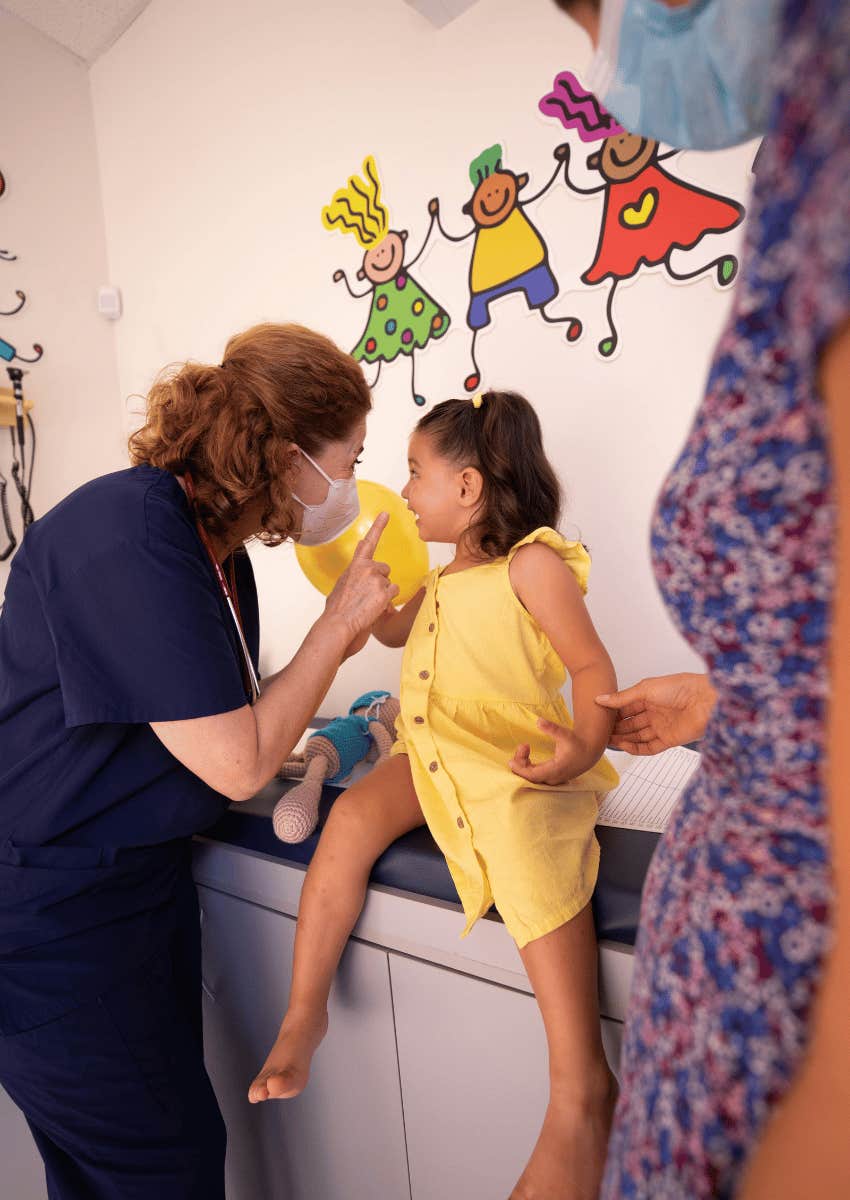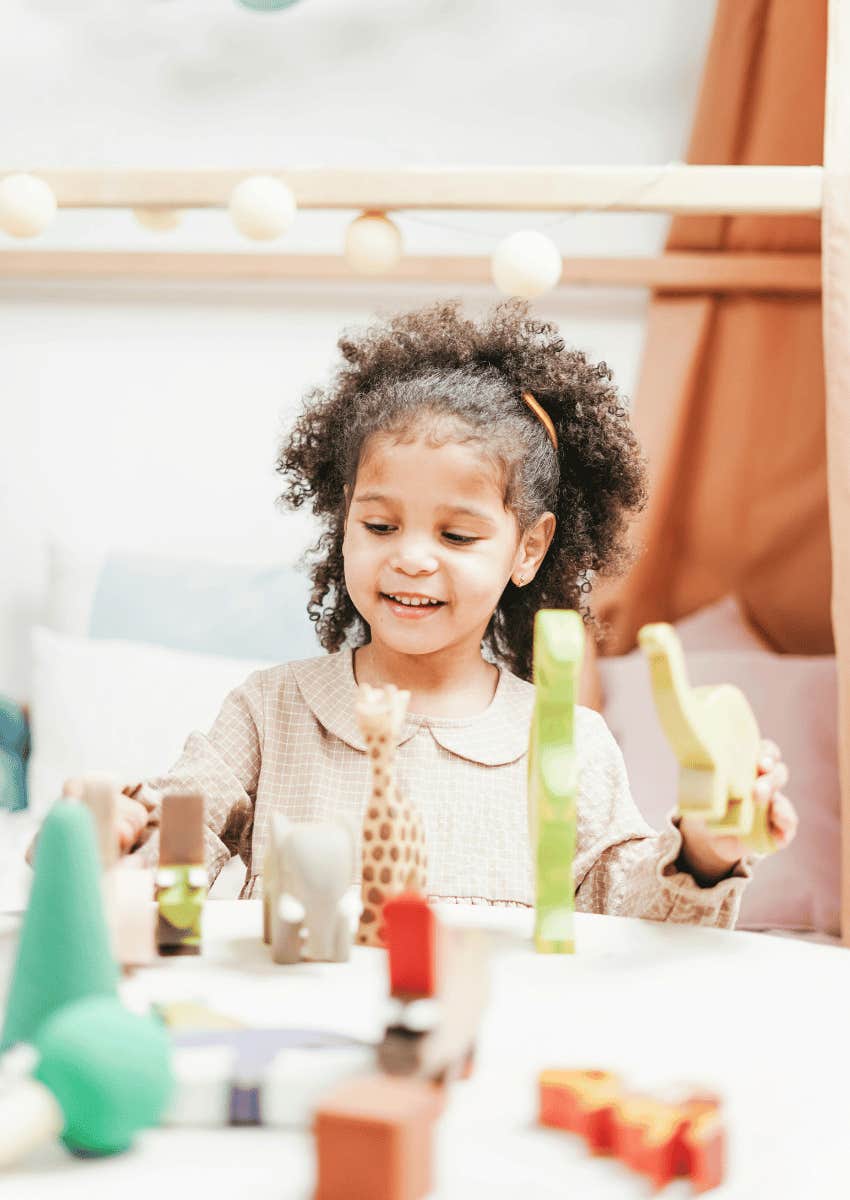My Imaginary Friends Were Born From Trauma But Saved My Life — 'I Still Rely On Johnny And Roy 50 Years Later'
I’ll always need my imaginary friends from time to time, no matter how old I get.
 princigalli | Canva, Bored games at thrift store | Courtesy of Author
princigalli | Canva, Bored games at thrift store | Courtesy of Author Four-year-old me sat at the end of the examination table, the heels of my sneakers thudding rhythmically against the base below as I swung my legs. I stared at the small geometric farm drawings on my denim-printed polyester pantsuit as Dr. Fields looked into first one ear, then the other.
As I followed his directions to stick my tongue out, cough, and breathe in deeply, I wondered if he liked the stupid pantsuit I was wearing. Mom had insisted that I change into it before my appointment because he’d commented last time how much he liked it.
I didn’t remember that. But, after questioning why I had to change, I obeyed. Pronouncing that I had another ear infection, Dr. Fields then asked Mom if she had any other questions as he wrote out my prescription for antibiotics.
The question my mom for my pediatrician was about my imaginary friends with who I often spoke.
“I do have one question," my mom said. "She’s been talking to people who aren’t there. Should I be worried? Is something wrong with her?”
I looked from Mom to the doctor. As an only child, my imaginary friends, Johnny and Roy, had become constant companions. I knew Mom was embarrassed by my public conversations with them. So, maybe there was something wrong with me.
Dr. Fields raised his reading glasses, resting them just above his eyebrows, and chuckled. His rotund belly jiggled, giving him a jolly air. He placed a hand on one of my ponytails and patted my head. My blonde curls had finally grown long enough to form little bun-like circles when pulled into the elastic holders.
“No need to worry. Sounds like she has a great imagination.”
Mom looked skeptical. “Really? This is okay?”
The doctor patted my head once more before helping me off the table. “Absolutely. She’ll likely be a creative adult.” He held down the jar of Dum Dum suckers, and I found my favorite flavor, butterscotch. Then we — Mom, me, Johnny, and Roy — headed home.
Sunday morning, we arrived at church early. My teacher, seated at the semi-circular table, greeted me warmly and told me to take a seat. I chose my favorite one and made polite conversation with her until a friend arrived.
Jamie first pulled out the chair on my right, which I quickly grabbed. “Sorry! You can’t sit there! Johnny is sitting there.”
Nodding, he took a couple of steps to my left and readied himself to sit in on this side. I took hold of that chair, too. “Not here either. Roy is sitting there.” Shrugging, Jamie scooted a seat one over, and we started talking across the empty chair.
When Mom picked me up after Sunday school, she shook her head at my seating arrangement. She, of course, knew why the seats on either side of me were empty, but she pleaded with me to let my friends sit next to me so it didn’t look as if no one liked me. I looked up at her, sincere in my reply. “No. Johnny and Roy need to be close.”
 Los Muertos Crew | Pexels
Los Muertos Crew | Pexels
To me, Johnny and Roy, my imaginary friends, were just as real anyone else.
They argued, and I calmed them down. They gave me advice, we read books and drew together, and they made me laugh. Unlike many imaginary friends, mine were based on real people. Well, real fictional characters, at least. My friends were Johnny and Roy from the NBC series Emergency! which premiered in 1972 and ran for six seasons.
Every Saturday night, I sat in front of the television, legs crossed in front of me, watching the Squad 51 paramedics from the Los Angeles County Fire Department assist those in danger. Then, during the week, Johnny and Roy accompanied me everywhere.
Yet my only other vivid memory of them being with me was during a shopping trip downtown with my mom and grandparents. I walked in front of the adults, flanked on either side by my imaginary friends.
They were arguing, so I was talking out loud to them, my head twisting from one side to the other as I tried to get them to make up. Finally, my pleading worked, and we were all laughing and enjoying each other’s company once again. Of course, only I could see my companions.
Behind me, I heard Mom say to Grandma, “I still wonder if something is wrong with her.” Grandma shushed her and nothing more was said.
A couple of years ago, now in my 50s, these memories resurfaced. I’d started working through Richard Schwartz’s book, No Bad Parts, in which he details his Internal Family Systems method of therapy.
As I learned about the role that parts play, especially for children growing up in abusive situations, something dawned on me about Johnny and Roy. Preschool me had chosen adults who rescued people in trouble as her imaginary friends. I knew it wasn’t a coincidence.
 cottonbro studio | Pexels
cottonbro studio | Pexels
The more I learned about the effects of trauma on development, the more I realized that Johnny and Roy had been more than just imaginary friends.
Many habits I attributed to my personality I’ve since learned were likely the result of trauma. So much of what I read felt familiar: picking at my cuticles, irrational fear of being in trouble, ruminating about past mistakes, trying to anticipate every possible future scenario, people pleasing, and feeling like everything was my fault.
Often, children enduring emotional abuse struggle to form identities apart from their families. But this never resonated with me. Even at age three or four, I had a strong sense of who I was. When Mom asked me to change into that pantsuit that Dr. Fields liked, I balked initially. I hated that pantsuit. Why should I wear it because someone else liked it?
My love of art, music, and books appeared early. I cared little about what other people thought of me or my interests. Yes, at times, I set that sense of self aside and chose to people please to avoid getting in trouble. But it was always a conscious choice for me.
I now believe that Johnny and Roy were instrumental in the development of my sense of self. While my parents wanted me to be a certain person, Johnny and Roy accepted me for who I was, quirks and all.
They rescued me in a way I didn’t understand as a preschooler, but now, thinking about it brings tears to my eyes. I wouldn’t be who I am today without my imaginary friends.
Truth be told, I haven’t outgrown imaginary friends. During this solitary season that I’m currently in, a new “part” has developed. I’ve endured my hardest moments alone. I have few friends with whom I can be completely vulnerable, especially in moments of high anxiety. Isolating the victim is common in emotional abuse, and in healing, building deep connections takes time.
So, a few years ago, when I was struggling and wished I had someone to encourage and comfort me, my imagination revved. One afternoon, in the car, anxiety spiraled on my long commute home. In answer, my imagination asked, “What would you want a loving and supportive partner to say to you right now?”
I thought about it and spoke out loud. “I know this is hard. But I’m here.”
 Antoni Shkraba | Pexels
Antoni Shkraba | Pexels
At age 50, a new imaginary friend was born. He has a name that I choose to keep private, and over the last four years, he has challenged, encouraged, and comforted me.
How I see him might differ from how I see Johnny and Roy, but the essence is the same. I never thought my imaginary friends meant something was wrong with me, but Dr. Glenn Doyle, a trauma therapist I follow on social media, has helped me understand it better.
In one of his first posts I encountered in July 2020, he said, “Imagine a fictional character you trust talking you through an anxiety attack. Obi Wan Kenobi (or Yoda, even). Mary Poppins. Mufassa. Captain Von Trapp. Our imagination and connection with [sic] fiction can be powerful secret tools in anxiety management.”
This was exactly how I’d started understanding my use of imaginary friends. Then, in March 2021, he explained further: “Most of us have plenty of experience carrying around our bullies & abusers inside our heads. Things can significantly change, though, when we start carrying around our mentors, protectors, & cheerleaders inside our heads—even if we have to make ’em up or take ’em from fiction.”
Bingo! Once I engaged my imagination again, this protector became a safe place for me, just as Dr. Doyle explained in December 2023. My therapist agrees and encourages this “relationship.”
Given my history with imaginary friends, I was drawn to the movie IF this summer. I saw it five times and cried every time. Cue the tears when Lewis the Bear says: “All kids need their imaginary friends, especially when they grow up.”
Spoiler alert: The tears continue as Bea helps the friends reconnect with their now-grown kids. Seeing these IFs calm the anxiety of their kids hits me deep inside.
I understand how the presence of my friend, my safe place, eases me into a more regulated space. At the end of the movie, Bea reconnects with her IF and tells him, “I’ll always need you, especially when I grow up.”
I don’t remember when Johnny and Roy faded into the background of my life, but they’ve certainly never been forgotten. I anticipate that, at some point, this new friend may be less of a presence in my daily life, as well.
But I suspect that I’ll always need my imaginary friends from time to time, no matter how old I get.
Amy G. Park unravels herself and life through her fiction and creative nonfiction stories. She self-published her first novel, Unexpected Love, during the pandemic and is currently working on the sequel.

